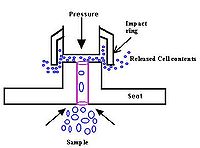High Pressure Homogenizers
High Pressure Homogenizers are used for homogenization of compounds that require high pressure for the processes. High Pressure Homogenizers are often the solution particularly useful in the pharmaceutical and biotech industries.
Processes
Homogenization is a fluid mechanical process that involves the subdivision of particles or droplets into micron sizes to create a stable dispersion or emulsion for further processing.
This is an important stage in the treatment of food and dairy products. It provides improved product stability, shelf life, digestion, and taste. Homogenizing can also significantly reduce the amount of additives required. It prepares feeds so that subsequent spray drying produces the best quality of powders. This is especially important for baby foods and many dairy and food products.
The process occurs in a special homogenizing valve, the design of which is the heart of the homogenizing equipment. The fluid passes through a minute gap in the homogenizing valve. This creates conditions of high turbulence and shear, combined with compression, acceleration, pressure drop, and impact. Causing the disintegration of particles and dispersion throughout the product.
After homogenization, the particles are of a uniform size, typically from 0.2 to 2 micron, depending on the operating pressure. The homogenizer is the most efficient device for particle and droplet size reduction. The actual properties of the product vary with pressure and product type in a complex relationship. In general, higher processing pressure produces smaller particles, down to a certain limit of micronization.
Video

